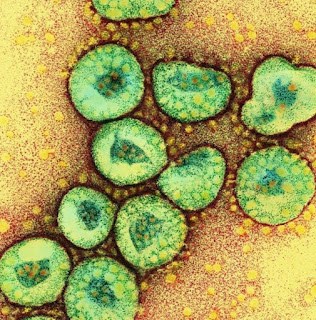What is Corona Virus?
Let’s know
about Corona Virus (CoV) which is originated from Wuhan(China).
First of all
we should know what are Microbes:
Microbes are
classified into:
- Bacteria
- Fungi
- Viruses
- Parasites
Hence,
Corona Virus is under the classification of microbes into the viruses.
Viruses:
Viruses are
not living organisms and which are generally detected at the of life. These are
known as not living organisms because they lack cellular structures. They can
replicate very quickly. And hence they can go viral very instantly and
therefore we can call them as #Go_viral viruses.
They are
discovered in the year 1892.Viruses affect your cells and further it uses your
own nucleas as a DNA OR RNA- making machine. They are also called as
Bacteriophage , because they attack bacteria present in the cells. Also they
called as Glucophage, because they eat glucose present in the cells of the
body. They are mostly lymphocytes which are small infectious agents and which
can transmit via vectors.
Viruses are
classified as:
- DNA Virus
- RNA Virus
And Corona
Virus comes under RNA viruses.
This can be simply understand by just looking at R present in Corona of RNA viruses.
Let’s have
look at which are RNA viruses:
- Toga,
- Flavi,
- Retro,
- Corona,
- Delta,
- Arena,
- Bunya,
- Filo,
- Rabdo,
- Orthomyxo,
- paramyxo,
- Picorna,
- Calici,
- Hepe,
- Reo (No envelope).
They are
known as No envelope viruses because they are naked viruses.
Corona
Viruses include:
- Common Cold
- SARS
- MERS
- 2019-nCoV “Wuhan”
Corona Viruses:
Corona
Viridiae where Viridiae stands for viruses. Corona is one of the ‘+’ve sense of RNA virus. These are single
stranded linear viruses. It has helical capsule and it also has envelope around
it.
Some of us
might have think that corona viruses are found few days ago, no, not at all it
was discovered first in 1960s and now its been detected again.
Corona
Viruses history:
- 229E and OC43 in (1960s)
It causes
Common Cold.
- SARS.CoV in (2003)
Severe-Acute
Respiratory Syndrome.
- HCoV NL63(2004)
It causes
Bronchiolitis.
- HKU-1 in (2005)
It cause
Respiratory diseases.
- MERS-CoV in (2012)
Middle-Eastern
Respiratory Syndrome i.e. “Camel Flu”.
- 2019-nCoV in (DEC 2019)
Wuhan Corona
Viruse found in China.
You will
notice these all are related with respiratory diseases.
Let us know
about Wuhan Corona Virus which is discovered few days ago.
Wuhan Corona virus:
Wuhan Corona
virus is also called as Novel Corona virus and Wuhan Seafood market pneumonia
virus. Also, nCoV.
These are
all synonyms to Wuhan Corona viruses.
First cases
were reported on December 31st, 2019. The initial source is still
unknown, but it is probably due to seafood market. Snakes might be probable
reservoir to this. The most hazardous effect of this is it can transmit from
human to human.
Until January
22, 2019, it is not considered a PHEIC by WHO. Here, PHEIC stands for Public
Health Emergency of International Concern. In other words it is considered as
Emergency in CHINA but not in other countries yet.
Till the
date, 830 cases indetified and 25 have died due to this corona virus.
Case
fatality rate= 25/830= 3%.
Causes:
The causes
of a coronavirus infection lie in the spread of so-called coronaviruses in an
organism, which subsequently cause symptoms of the disease.
Symptoms:
Coronavirus
infection can be life-threatening for a person and must always be treated by a
doctor. In the worst case, this infection can lead to death or serious
complications. Patients with coronavirus infection primarily suffer from a very
high fever .
Diagnosis:
If there is suspicion of a coronavirus
infection, a doctor should be consulted immediately. In addition to a
comprehensive physical examination that is designed to rule out other causes of
the symptoms, the coronavirus can be detected using antibodies.
Complication:
Coronavirus infection usually causes the
person affected by the symptoms of the flu. There is a high fever and cough
with a sore throat. Pain in the extremities also occurs and those affected
complain of chills at the beginning of the coronavirus infection. In severe
cases, breathing difficulties such as shortness of breath may also occur.










6 Comments
Very helpful...👍🏻👍🏻
ReplyDeletereally helpful information 👍
ReplyDeleteThank You!
Delete👍👍👍
ReplyDelete👍🏻👍🏻helpful
ReplyDeleteCovid-19 has created challenges over the rehabilitation services that are contoured by rehabilitation unit chennai . Covid rehab centre chennai is consistent through health services and over this pandemic.
ReplyDelete